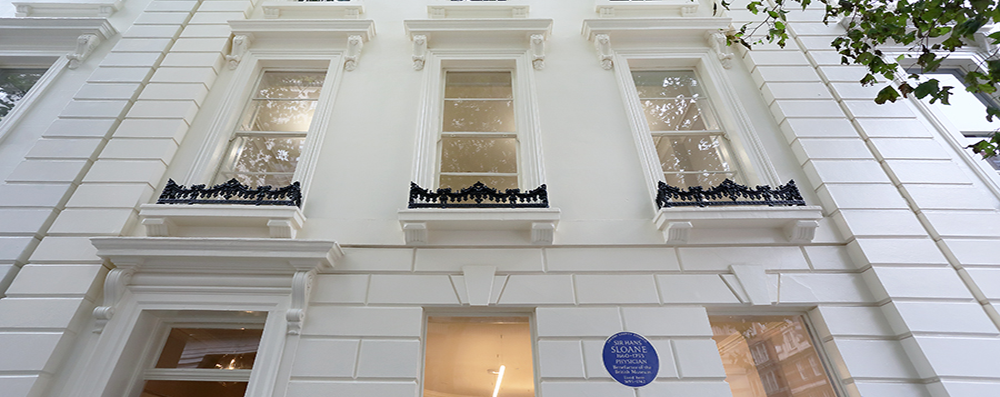
Working on building refurbishments across the London Estates we regularly find ourselves working on heritage buildings, full of historical features which need to be preserved whilst we upgrade the buildings to modern energy standards. These properties are often Grade I or II listed buildings, meaning they are of special historical, cultural, or architectural interest or are of national importance and have been deemed to be worth protecting.
Regularly working on projects with buildings of this type, not only makes our project teams well versed in dealing with the challenges of heritage buildings and imbues them with a respect for the importance of protecting their historical features, but it also means we encounter numerous English Heritage blue plaques, which really help bring the history of the buildings to life.
In this blog we take a look at some of the stories behind the blue plaques Gaysha have come into contact with whilst working on refurbishment projects.
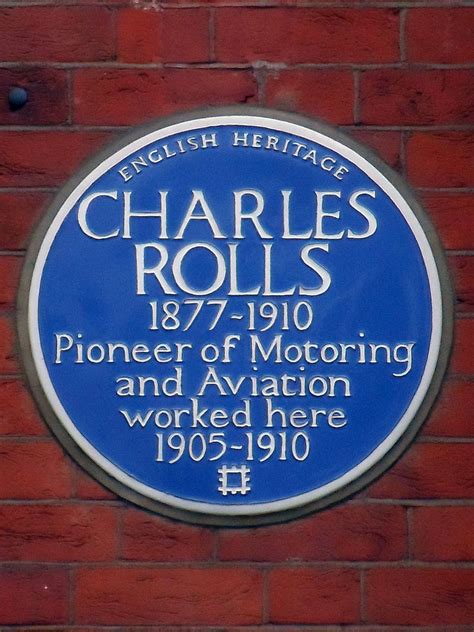
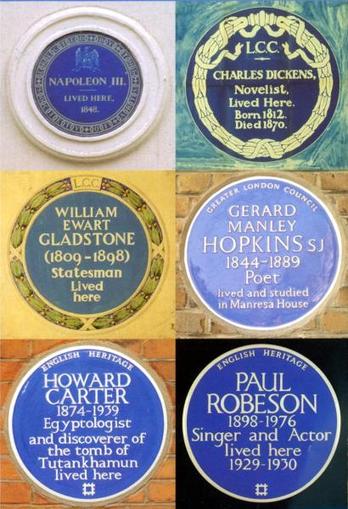
The Blue Plaque Scheme
It may come as a surprise to learn that the blue plaque scheme is not a late 20th Century invention by Visit London but has been in existence for more than 150 years. The blue plaque scheme was founded in 1866 by the Society of Arts which aimed to bring the history of London to life, by linking notable figures of the past with the buildings of the present. In 1986 English Heritage took over ownership of the scheme and 2016 marked its 150-year anniversary. Today there are over 900 plaques across the city, highlighting the lives of notable men and women who have links to the buildings.
“The obvious merits of the plaques as records and registers of the eminent are one thing, and alone justify their existence, but I find that they go deeper than that. For me, they are a unique imaginative portal into the past…”
– Stephen Fry, quoted in Lived in London
The first ever blue plaque was awarded to Lord Byron in 1867, but his house near Cavendish Square has since been demolished.
To be eligible for a blue plaque nomination today, a notable figure has to have been dead for over 20 years. However the oldest surviving plaque, installed in 1867 off St James’s Square, commemorates the French Emperor Napoleon III, who was still alive when the plaque was installed.
The following are some of the blue plaques we’ve encountered on our projects:
Felix Mendelssohn (1809–1847) – 4 Hobart Place
Mendelssohn was a German composer, pianist, organist and conductor of the early Romantic period. His best-known works include the overture and incidental music for A Midsummer Night’s Dream, the Italian Symphony, the Scottish Symphony, the oratorio St. Paul, and the String Octet. The melody for the Christmas carol “Hark! The Herald Angels Sing” is also his. He made ten visits to Britain, lasting about 20 months; he won a strong following, which enabled him to make a good impression on British musical life. During these visits he stayed at 4 Hobart Place, a three-storey Grade II listed terraced house in Belgravia.
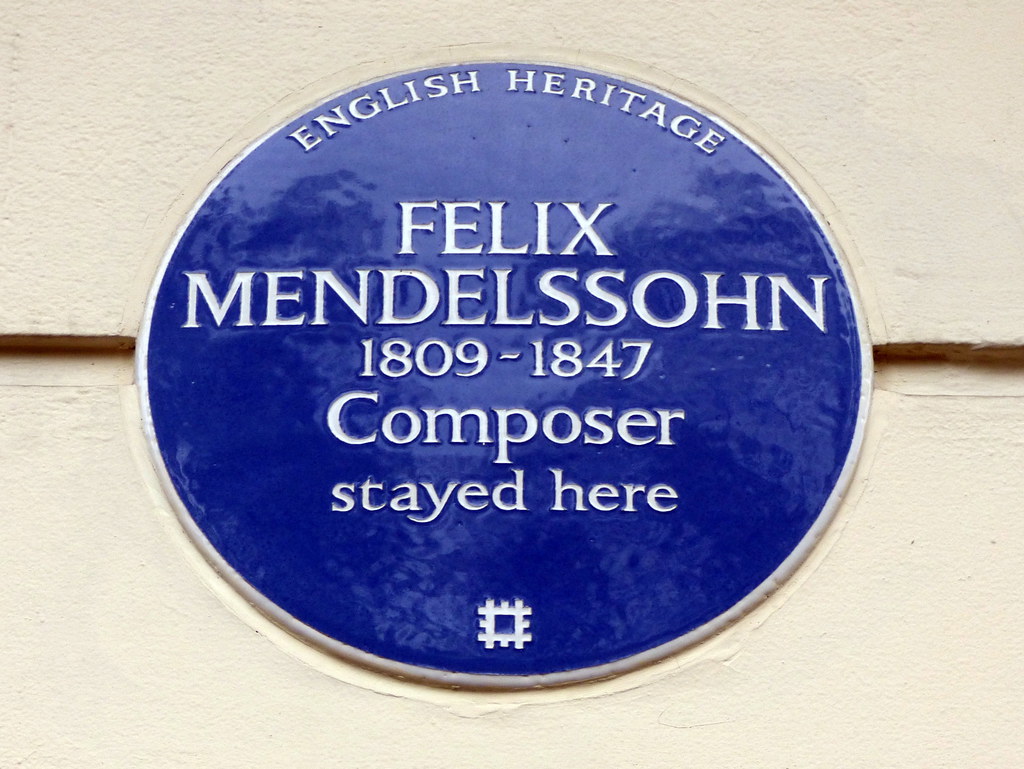

Prince Metternich (1773–1859) – 44 Eaton Square
Prince Metternich was a Austrian statesman and diplomat who was at the center of European affairs for three decades as the Austrian Empire’s foreign minister from 1809 and Chancellor from 1821 until the liberal Revolutions of 1848 forced his resignation. After a brief exile in London (during which he leased 44 Eaton Square), Brighton, and Brussels that lasted until 1851, he returned to the Viennese court, this time to offer only advice to Ferdinand’s successor, Franz Josef. Having outlived his generation of politicians, Metternich died at the age of 86 in 1859.
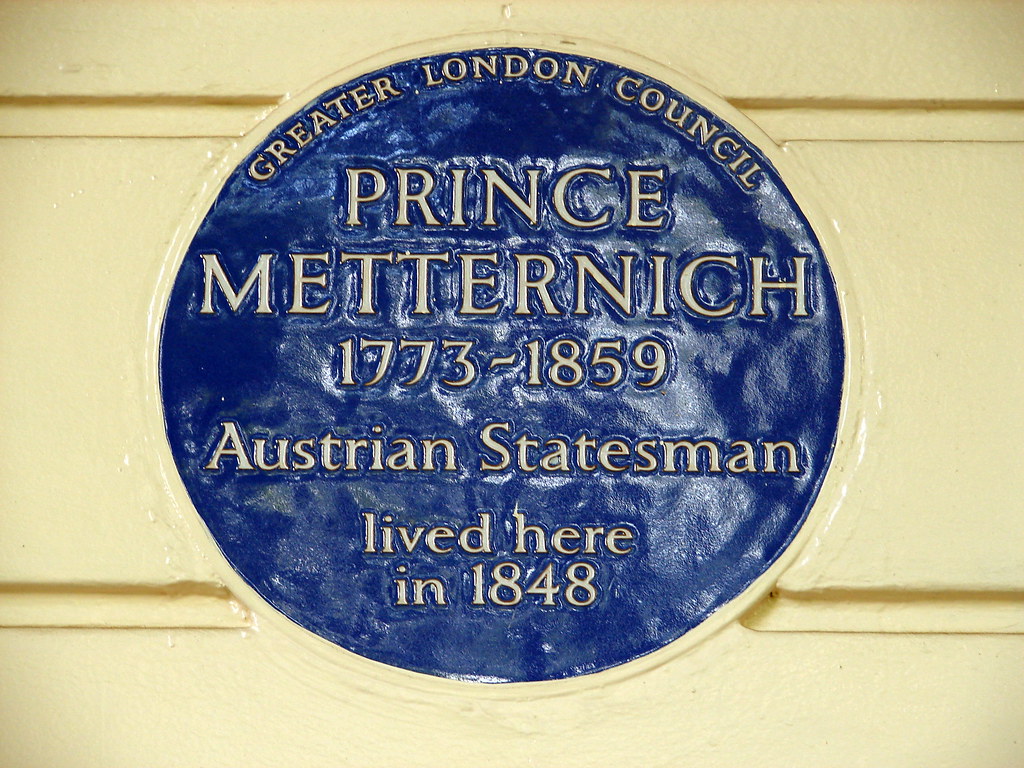

George Peabody (1795–1869) – 80 Eaton Square
George Peabody was an American financier and philanthropist. He is widely regarded as the father of modern philanthropy.
Born into a poor family in Massachusetts, Peabody went into business in dry goods and later into banking. In 1837 he moved to London (which was then the capital of world finance) where he became the most noted American banker and helped to establish the young country’s international credit.
Having no son of his own to whom he could pass on his business, Peabody took on Junius Spencer Morgan as a partner in 1854 and their joint business would go on to become J.P. Morgan & Co. after Peabody’s 1864 retirement.
In his old age, Peabody won worldwide acclaim for his philanthropy. He founded the Peabody Trust in Britain and the Peabody Institute and George Peabody Library in Baltimore (shown below right), and was responsible for many other charitable initiatives. For his generosity, he was awarded the Congressional Gold Medal and made a Freeman of the City of London, among many other honors.
In 1869, aged 74, he died at 80 Eaton Square, the home of his friend Sir Curtis Lampson.
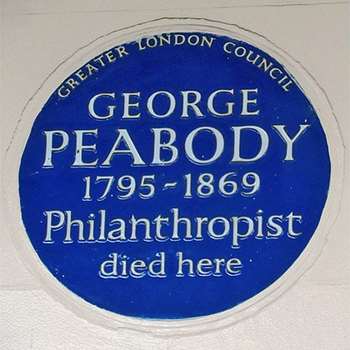

Sir Hans Sloane (1660-1753) – 4 Bloomsbury Place
Sir Hans Sloane was an Anglo-Irish physician, naturalist, and collector, with a collection of 71,000 items which he bequeathed to the British nation, thus providing the foundation of the British Museum, the British Library, and the Natural History Museum, London.
He was elected to the Royal Society at the age of 24. Sloane travelled to the Caribbean in 1687 and documented his travels and findings with extensive publications years later. Sloane was a renowned medical doctor among the aristocracy and was elected to the Royal College of Physicians at age 27.
Streets and places were later named after him, including Hans Place, Hans Crescent, and Sloane Square in and around Chelsea, London – the area of his final residence. From 1695-1742 he lived at 4 Bloomsbury Place; his collection having outgrown his previous property next door. He paid his landlords – the Bedford estate – an annual rent of £8 14s shillings for the first house and £9 for the annexe.
As if these achievements were not impressive enough, he is also credited with the creation of drinking chocolate.
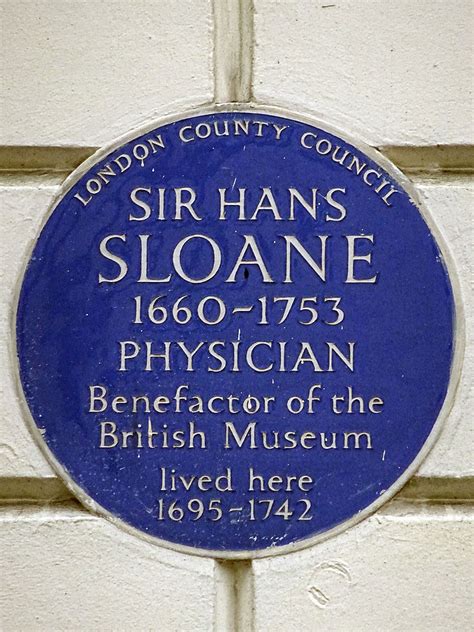

Ian Fleming (1908–1964) – 22 Ebury Street
Ian Fleming was a British writer, journalist and naval intelligence officer who is best known for his James Bond series of novels.
Fleming came from a wealthy family connected to the merchant bank Robert Fleming & Co., and his father was the MP for Henley from 1910 until his death on the Western Front in 1917. Educated at Eton, Sandhurst, and, briefly, the universities of Munich and Geneva, Fleming moved through several jobs before he started writing.
While working for Britain’s Naval Intelligence Division during the Second World War, Fleming was involved in planning Operation Goldeneye and in the planning and oversight of two intelligence units, 30 Assault Unit and T-Force. During this time he lived at 22 Ebury Street, Belgravia from 1936-1941.
His wartime service and his career as a journalist provided much of the background, detail and depth of the James Bond novels. Fleming wrote his first Bond novel, Casino Royale, in 1952. It was a success, with three print runs being commissioned to cope with the demand. Eleven Bond novels and two collections of short stories followed between 1953 and 1966.
The Bond stories rank among the best-selling series of fictional books of all time, having sold over 100 million copies worldwide and spawned one of cinema’s most successful film series, starting with Sean Connery in Dr No in 1962, with Daniel Craig’s final outing in 2021 being the 25th entry in the series.
Fleming also wrote the children’s story Chitty-Chitty-Bang-Bang. In 2008, The Times ranked Fleming 14th on its list of “The 50 greatest British writers since 1945”.
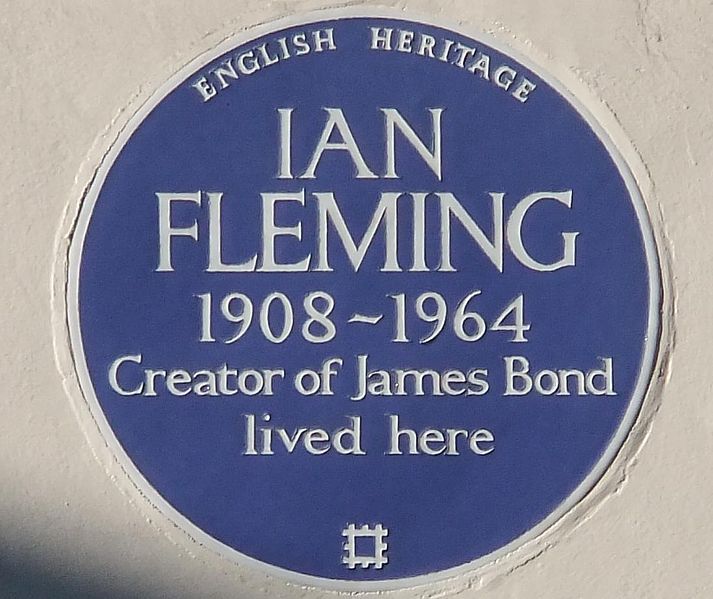

Conclusion
These are just some of the storied we’ve delved into after coming across blue plaques whilst working on refurbishment projects on heritage properties. The plaques can really help bring the history of the properties to life and help contractors realise the importance of carefully protecting some of the historical features we encounter whilst renovating and upgrading these buildings. We look forward to encountering more plaques in the future.
Support the scheme
The blue plaques scheme has been running for over 150 years and has become synonymous with London life. Every plaque, from research to production, is funded by donations. The future of the scheme relies on your support every step of the way.
You can help support the scheme here: https://www.english-heritage.org.uk/visit/blue-plaques/support-the-scheme/

Article by Dom Mahoney at Gaysha Ltd, a London-based fit out & refurbishment contractor, experts in sustainable refurbishment of listed and historic buildings and operating across the residential, commercial and industrial sectors.
Gaysha Ltd, 5th Floor, 42-44 Grosvenor Gardens, London SW1W 0EB
Tel: 0203 887 3623 Email: info@gaysha.co.uk Web: www.gaysha.co.uk





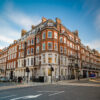


Nice article Dom.
Thank you 🙏🏻